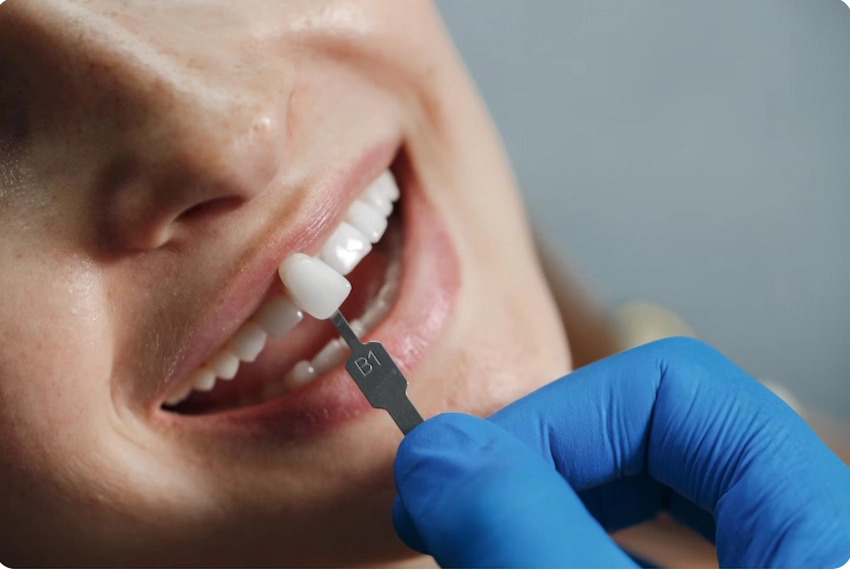🦷 What is a Dental X-ray and How is it Taken?
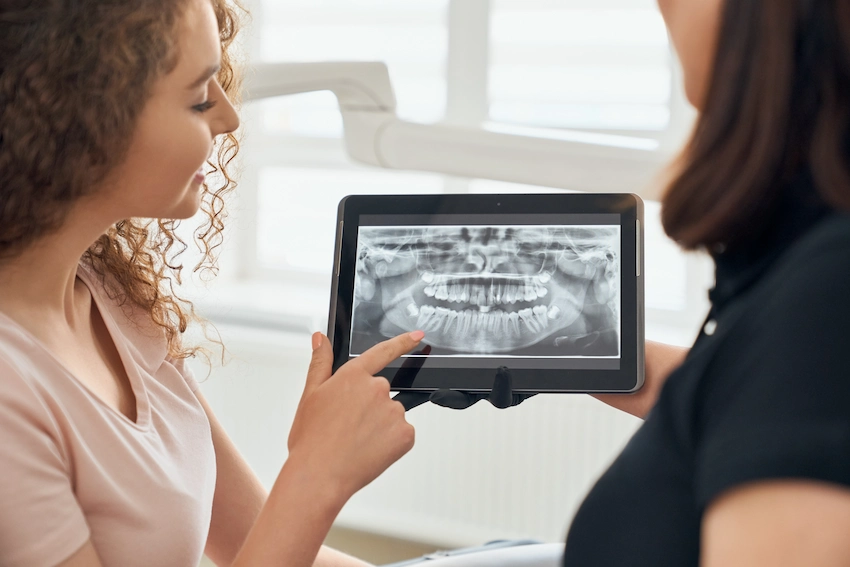
What is a Dental X-ray and How is it Taken?
A dentist performs dental X-rays to determine if there are any problems that need fixing or checking in order to have the best dental care possible. The X-ray method is suitable for the diagnosis of teeth and surrounding tissues. Is this method of X-ray easy to follow? How can I get the most out of it, while at the same time, my dentist offers better care? These would be discussed in the section that follows.
Our article today will give a detailed explanation of dental X-rays, including the procedure of taking them, their safety, and the most frequently asked questions related to this necessary medical test.
How Are Dental X-Rays Taken?
It’s effortless to take a dental X-ray because normally, it will only take a few minutes of your time. At your dental appointment, the technician will place the X-ray machine right next to your head to take the picture, depending on the type of X-ray being taken. If it’s a bitewing X-ray (which shows upper and lower teeth), you will probably be told to bite down on a small plastic tab while the X-ray is being shot.
In the taking of a panoramic X-ray (showing the whole oral cavity, i.e., teeth, jaw, and adjacent structures), the machine is rotated around the head, as it takes images from different angles. This panoramic view gives a better understanding of your dental situation as the dentist can now see details which may not be evident with normal X-rays, such as impacted teeth or bone problems.
To protect you from the small radiation, a lead apron will be put on your body while the X-ray equipment operates. From the X-ray device, the images are then transferred to a computer where the dentist can see the pictures and make the correct diagnosis.
Are Dental X-Rays Harmful?
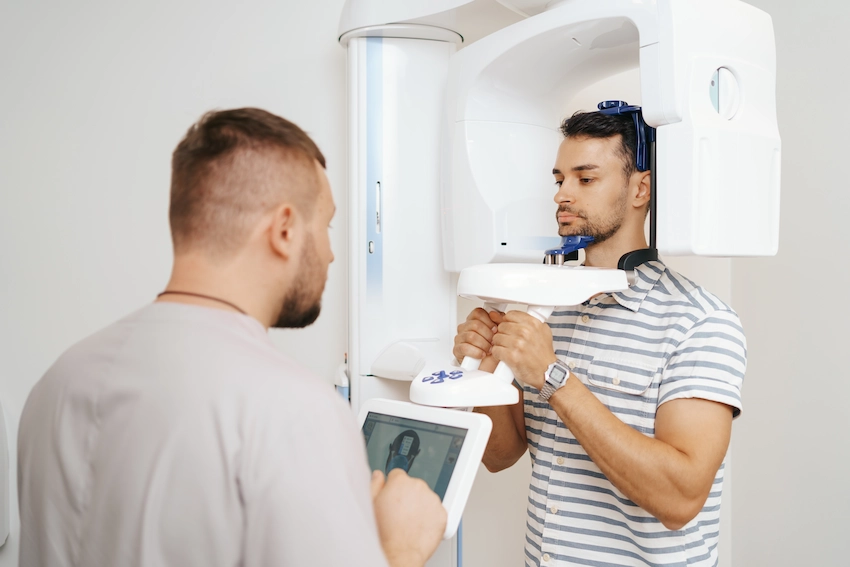
X-rays work based on radiation to take dental imagery, and although the radiation dose is minimal, the exposure is still extremely low and safe. Furthermore, the modern tools used in today’s dental clinics are specifically made to produce less radiation, thus making the whole process safer. Also, the apron resistant to lead worn during the process protects the body from unnecessary radiation.
Another essential factor is that dental X-rays are not taken just to generate the images. Dentists use specialized X-rays to identify situations that could only be seen with the help of the picture. For example, the X-rays can reveal the cavities between teeth and confirm the loss of bone due to gum disease. The preventive actions in dental care can spare one from more serious problems in the future, making the gains of the X-ray procedure surely many times bigger than the hazards.
How to Take an X-Ray of Wisdom Teeth?
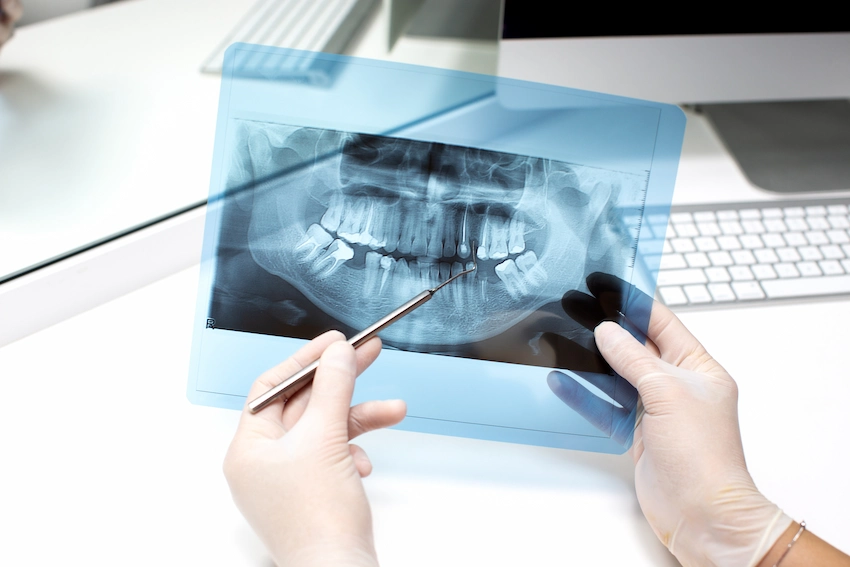
For wisdom teeth, one would need to obtain an X-ray to position them, largely to know if they are beneath the surface. The infection, pain, and other harmful effects of impacted teeth may turn into some serious medical problems. Panoramic X-rays are recommended for wisdom teeth due to their wider scope of the entire mouth, revealing not only the teeth but also the jaw, etc.
Such a type of X-ray will aid the dentists to know for sure if the wisdom teeth are growing in the right manner or if complications may arise due to their emergence. But if the wisdom teeth are not completely out of the gums, the dentist may suggest getting extra images like a cone-beam CT scan to check whether the teeth and the surrounding bones are in good shape.
Would an Inflamed Tooth Require an X-Ray?
Yes, it is quite possible that a tooth suffering from an inflammation could have an X-ray procedure to view the extent of the problem. The inflammation of a tooth can occur for several reasons, including infection, abscess, or a deep cavity that has reached the nerve. The dentist, through an X-ray, can see the situation of the tooth root, including the bone around it, to determine the presence of infection, decay, or other hidden causes.
Bone loss due to untreated cavities or an abscess can also be revealed by an X-ray, which might affect how a tooth should be treated. Additionally, the doctor can determine whether a root canal is necessary, whether the affected tooth needs to be removed, or if other operations are required.
Are X-Rays Used on a Pregnant Woman?
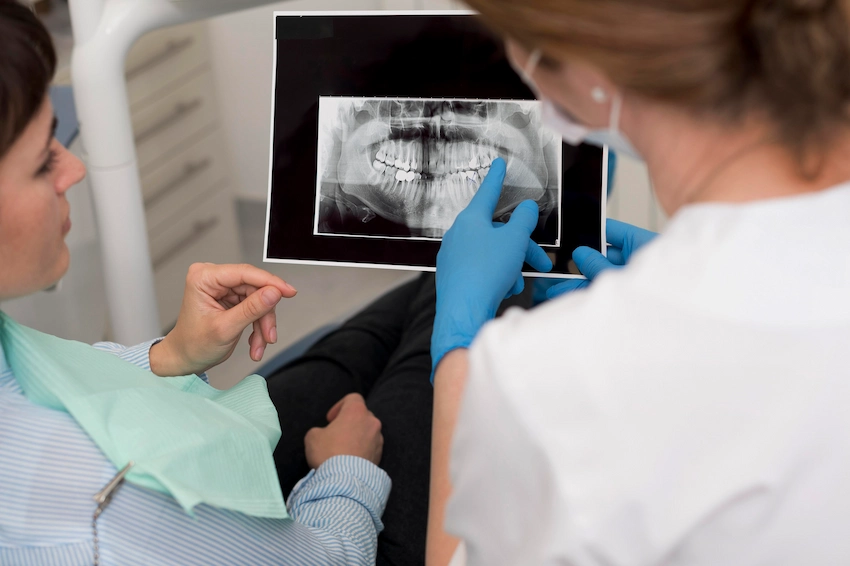
It is sensible to be anxious about the safety of dental procedures during pregnancy, but dental X-rays could be performed on pregnant women in general with certain added safety measures. Primarily, the first trimester is usually off-limits for non-emergency dental X-rays because this is the period of utmost fetal development. However, in cases of infection or severe dental pain, especially if unexplained, an X-ray can be performed besides.
A lead apron and a thyroid collar are placed around the patient during the X-ray so that she and her unborn baby are protected from X-radiation. If you are aware that you are pregnant or not sure of your pregnancy, it is in your best interest to tell your dentist, and together they shall decide if indeed there is a need for an X-ray and the best way to protect you and your baby.
FAQ: What is a Dental X-ray and How is it Taken?
A dental X-ray normally occupies a period of 5 to 10 minutes, depending on whether an X-ray of the required type is needed. The procedure is very short, and one shall not feel any discomfort during the attractiveness of the process.
No, dental X-rays are not at all painful. One might need to hold their mouth in a certain way or chew on a little bit of plastic, and that can lead to a little pain, but that’s about it.
A decayed tooth is represented as black on an X-ray because decay has occurred, and the tooth density has decreased. In this way, the X-ray easily traverses the decayed area, thereby producing a shadow that suggests the area is damaged.
Unfortunately, that is not the case, since only those oral diseases that affect hard tissues can be seen in an X-ray. Only more severe gum diseases, such as periodontitis, which is characterized by bone loss around the teeth, will be visible on an X-ray.
Initially, there is no need to prepare before a dental X-ray is taken. But the only thing you may be requested to do is to take off accessories and all metals that could cause an obstruction in the process of carrying out the imaging.



